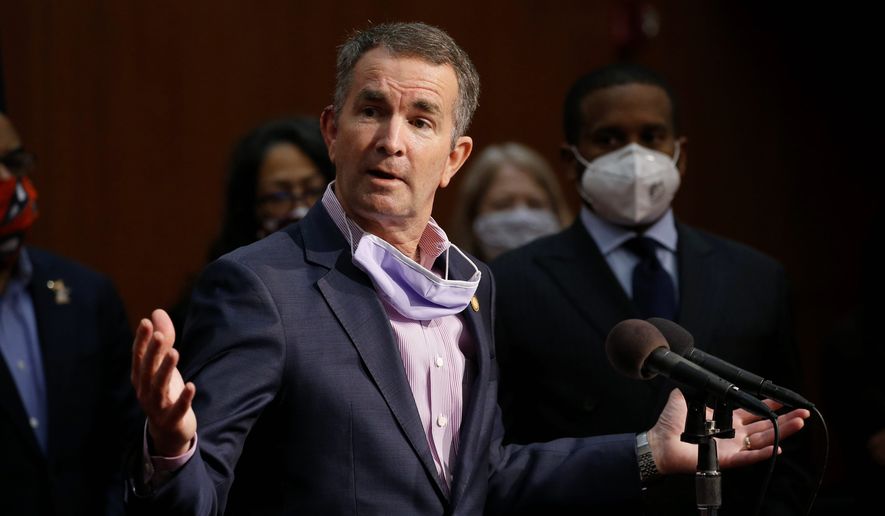Virginia lawmakers will have millions of dollars worth of wiggle room as they hammer out the differences between the House and Senate budget plans.
Gov. Ralph Northam told lawmakers Monday that his team has found an additional $730.2 million in state revenue for the more than $135 billion two-year budget.
That means total revenues and transfers for fiscal 2021 can be increased by $410.1 million and by $320.1 million for fiscal 2022.
“These revised budget numbers tell us that Virginia’s economy continues to thrive, in spite of the pandemic,” said Mr. Northam, a Democrat. “These additional dollars help us get back to that historic budget and allow us to move forward with our shared priorities — providing Virginia families and businesses the relief they need to get back on their feet, supporting public schools, and giving our public workers a pay raise.”
The House and the Senate unveiled their own versions of a budget proposal last week, and they need to negotiate a final version before Mr. Northam can approve it. It’s one of the top priorities for the special session set to end at the beginning of next month.
“With a brighter revenue forecast and a clearer path out of the pandemic, this budget will continue the work of the last special session to build a safer, healthier, and more equitable commonwealth,” House Appropriations Chairman Luke Torian said in a statement.
Both plans put emphasize spending for education by allocating tens of millions of dollars for additional school counselor resources, summer school plans and programs to help educators make up for learning loss during the pandemic.
Each plan also calls for giving educators a pay increase, though the plans differ in how much teachers would get.
The House plan would provide a 5% salary increase beginning in July, which would cost more than $230 million. The Senate offers a 3% increase, which would go into effect in 2022 and cost $140 million.
Both differ from Mr. Northam’s proposal of providing a guaranteed 2% bonus for teachers that could become a permanent raise.
The two plans also allocate money for pay raises for state employees, following through on a promise made by the Democrat-controlled General Assembly’s appropriations committees in October. The House version includes $168 million, which would provide a general 3.5% raise, higher pay for certain social workers and a $1,000 bonus for correctional officers.
The Senate’s plan would provide $118 million for a 3% increase starting in September, if there are still enough revenue funds at the end of the year.
With regard to higher education, both chambers allocated $36 million for Mr. Northam’s “G3” plan that waives tuition at community colleges in certain fields. The Senate includes an additional $5 million for program outreach.
The budgets also touch on Democrats’ criminal justice reform efforts by including funds to support their multiyear plan to legalize recreational marijuana, which would include industry regulation and expungement for certain drug-related charges.
The House allocated $20 million for the effort, while the Senate put in $35 million.
Both plans also include additional funds for COVID-19 vaccination efforts, though lawmakers are planning to have those resources bolstered by federal aid.
• Gabriella Muñoz can be reached at gmunoz@washingtontimes.com.




Please read our comment policy before commenting.